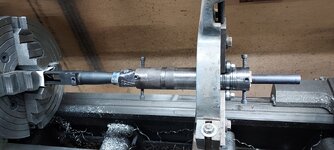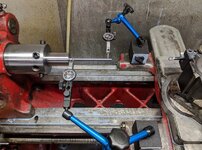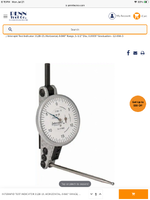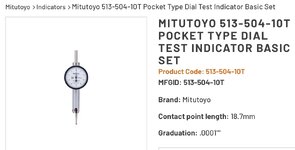I found a Standard Modern 1334 in beautiful shape, it comes with a good assortment of tooling and a few chucks. It has a vfd installed as well but I’ll need (want? Need?) to add a DRO sometime soon. First project once I learn the operations will be to build a rear spider for it.
Any recommendations on easy projects a guy can do to learn the operations of a machine?
That looks like a nice machine - it should be fun.
The dad in me has to mention safety.
Developing safe work habits includes having a system of checking for dangers every time before turning the lathe on. The chuck has to be clear of the tool post, the project, indicators, lights, etc. Get in the habit of double checking jaw tension and being on the lookout for situations where the work piece will tend to walk out of the chuck. Turn slower until you have some time under your belt. Faster speeds often give better surface finishes, but most things can be learned going slow. Unlike woodworking, metal lathes create surfaces and stringy chips that will easily cut skin. In general, don’t touch anything while it is spinning - a simple burr on a facing cut can be like a miniature meat slicer. Remove stringy chips with a pair of needle nose pliers or a coat hanger with a hook on the end. Remove sharp burrs on everything including scrap headed for the metal pile with a file or cutter.
Regularly oil everything, and protect the ways as much as possible.
Just leveling a machine can be more difficult than you’d think. In machining the phrase everything is rubber starts to come into play on day one. It takes a machinist level to get you close to what would be level front to back, side to side, but your bed will flex a measurable amount if it isn’t leveled correctly. Some machines are a little wonky from the factory and some trade offs in how it’s leveled have to be made.
There are probably all sorts of projects they had folks build in trade schools, and are probably selected for specific reasons that all tie together. In general I simply practice what I’ll need to do the next step in fitting the barrel. However, don’t thread toward a shoulder because crashing a cutter is not good. As others said, turn threads upside down in reverse if possible. Any cuts stopping at a shoulder are best to sneak up on without auto feed.
It’s not a reflection on your machine, but lathes new or old are not perfect and you’ll learn what it’s tolerances are with each type of cut. Simply cutting an accurate cylinder 12” to 18” long shows how far off your center is. Then backing off the center with machine turned off and sweeping that much stick out with an indicator shows if your headstock is in alignment with the bed in or out.
Facing a 6” to 8” plate held in the chuck, then sweeping the surface from side to side with an indicator will show how in alignment the cross slide is with the headstock and how well centered the cutter is up or down. Set the cutter accurately, but knowing about minor misalignment in the machine doesn’t mean you’ll have to fix it, or even be able to fix it.
Compared to steel, aluminum cuts easily and is great to practice on. Use sharp cutters and wd-40 for lubricant to keep the metal from sticking to the cutting edge. Unfortunately, my brain doesn’t get much enjoyment out of cutting aluminum, so I’ve never practiced on it or plastic, just steel. Mild steel cuts like crap and surface finish can be discouraging, so don’t let that get you down, your work will look better on leaded steel or grades with higher carbon content.
It’s a big fun hobby. You’ll think of dozens of projects around the shop.
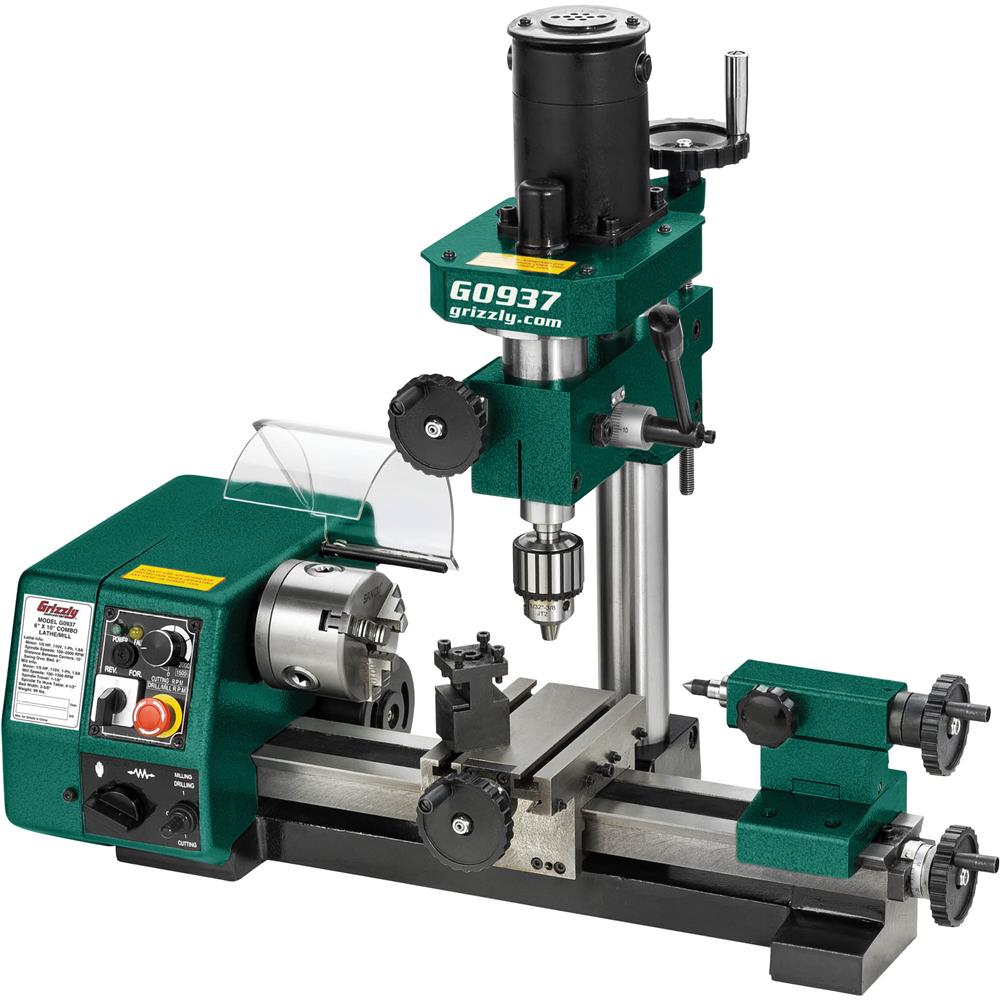
 www.grizzly.com
www.grizzly.com


